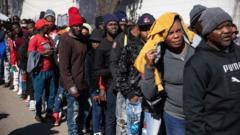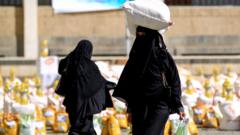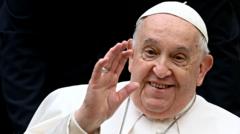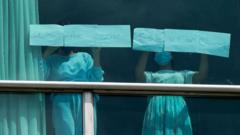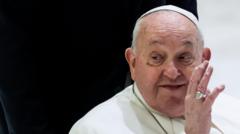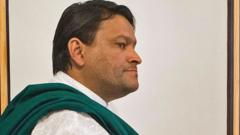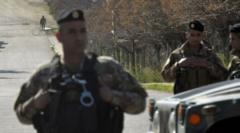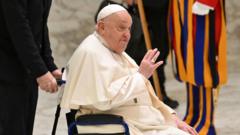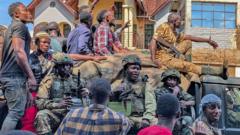The recent capture of Goma by the M23 rebel group has left residents in a state of trepidation, as they navigate life amidst violence, injury, and a dramatic shift in local governance. Health facilities struggle under the influx of victims, while the economic and social implications are becoming apparent as many flee the instability.
Goma Under Siege: Reactions to M23's Control in Eastern DR Congo
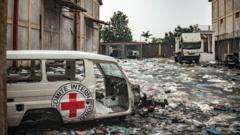
Goma Under Siege: Reactions to M23's Control in Eastern DR Congo
Amidst the ongoing conflict in Goma, the city's residents grapple with the impact of rebel control and ongoing violence, illustrating the complex dynamics of survival and fear in a war-torn region.
Goma is currently experiencing a tense transition following the swift capture by the M23 rebel group. Situated in the volatile eastern region of the Democratic Republic of Congo (DRC), Goma, a city housing nearly two million inhabitants, now finds itself under the control of the ethnic Tutsi-led M23 faction, which proclaims to be fighting for the rights of minorities. Last week's encounter with Congolese forces resulted in approximately 700 deaths and 3,000 injuries, a stark reminder of the ongoing turmoil.
Questions arise at the security checkpoints controlled by M23 soldiers, where innocuous civilian life comes to an abrupt halt. Commuters hustle and vendors engage in trade, but the air is thick with an unsettling presence. As individuals pass through these checkpoints, they must confront a shocking new reality—Goma's previous governance has been obliterated overnight.
Local hospitals are burgeoning with casualties, as medical professionals rush to treat the wounded. Dr. Nathaniel Cirho, a casualty himself due to a bomb’s stray shrapnel, expresses concern over an inflow of injuries ranging from shrapnel wounds to gunshots. Distress echoes through the wards, with several patients reflecting the human toll exacted by the violence. One elderly woman recounts her horror after being shot, emphasizing an urgent need for medical assistance that was initially denied.
The consequences of the escalating conflict extend beyond mere physical injuries; reports of sexual violence as a weapon of war compound the distressing situation. Despite a façade of normalcy across parts of the city, many businesses remain closed, as residents voice their fears about the ongoing instability. Shop owner Sammy Matabishi reflects anxiety over uncertain conditions and declining trade due to the turbulent situation.
Another layer of complexity surfaces as some Goma residents seem resigned to M23's presence. The rebels, asserting control in strategic locations, are visually dominant and evoke different reactions among the populace. Reports indicate that government forces have retreated, leading to a visible absence of Congolese soldiers on the streets.
As regional tensions persist, the DRC government remains firm in its position that M23's control is illegitimate, urging for the reclamation of territory with Rwanda's alleged backing. The unpredictable security situation raises alarms as M23 rebels progress towards South Kivu, with the potential of reaching Kinshasa looming ominously over the nation.
Goma stands as a critical reflection of what could lie ahead for the DRC, encapsulating fears, the grim realities of war, and survival in a fractured region.

